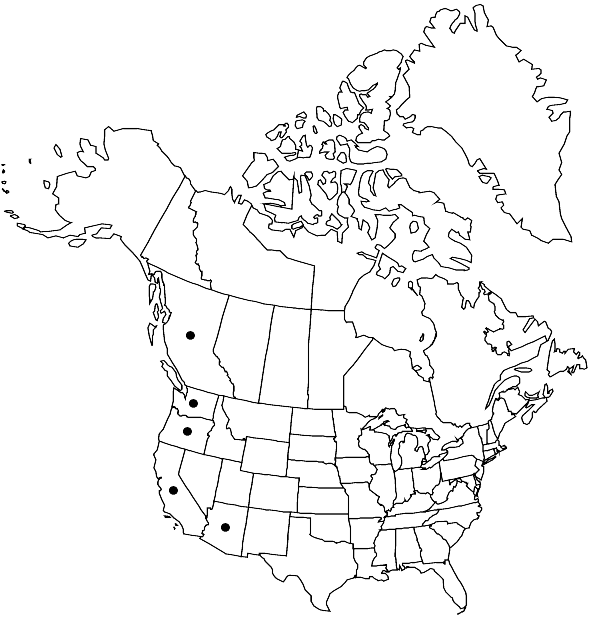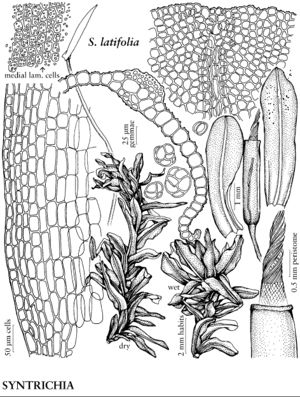Syntrichia latifolia
Muscol. Germ., 342. 1833,.
Stems 4–12 mm. Leaves infolded, twisted, and slightly contorted when dry, erect-spreading when moist, narrowly or broadly spatulate, 1.8–2.8 × 0.6–0.8 mm; margins revolute in the proximal 1/2, entire; apices obtuse; costa ending a few cells before the apex or percurrent, brown, smooth; basal cells abruptly differentiated, narrower toward the margins; distal cells rounded, polygonal, or quadrate, 12–18 µm, with 4–6 papillae per cell. Specialized asexual reproduction by gemmae on the adaxial or occasionally the abaxial leaf surface of leaves, ovoid and rounded, 25–45 µm in diameter, green to brown, multicellular. Sexual condition dioicous. Seta red, 6 mm. Capsule red, 3 mm, straight, with a distinct neck; operculum 1.5–2mm, red; peristome 1 mm, basal membrane 1/2–2/3 the total length, red. Spores 10–15 µm, papillose.
Habitat: Bark of trees, rarely on rocks
Elevation: low to high elevations
Distribution

B.C., Ariz., Calif., Oreg., Wash., Europe.
Discussion
Selected References
None.
